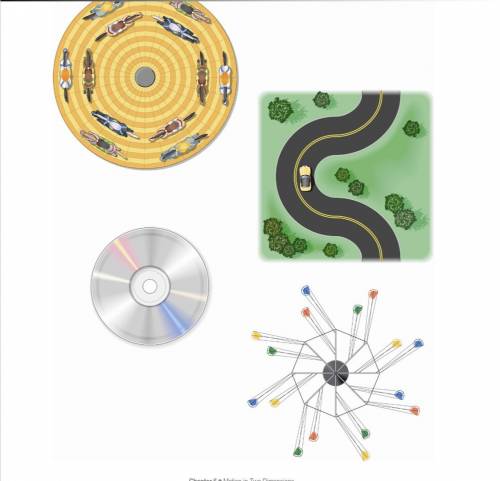
Physics, 09.02.2021 14:00, babyduckies37
Assuming that all of the objects have approximately the same velocity, which of the pictured objects most likely has the greatest period and which has the smallest period? How do you know?


Answers: 1
Other questions on the subject: Physics

Physics, 21.06.2019 15:00, yungkxng57
An uncharged nonconductive hollow sphere of radius 18.0 cm surrounds a 12.0 µc charge located at the origin of a cartesian coordinate system. a drill with a radius of 1.00 mm is aligned along the z axis, and a hole is drilled in the sphere. calculate the electric flux through the hole.
Answers: 3

Physics, 21.06.2019 21:10, Ashley606hernandez
Tafari worked one summer on a ship that set weather buoys in the ocean. he watched how one of the buoys moved in the water. describe which parts of the wave would cause the buoy to bob up and down. which wave property determined how fast the buoys bobbed in the water? he observed that when the wind blew harder, the ocean waves were larger, and the buoys moved away from the ship. what effect, if any, did the waves have on how far the buoys moved? explain your answer.
Answers: 3

Physics, 22.06.2019 02:30, jendun123ovrxij
The particle in a two-dimensional well is a useful model for the motion of electrons around the indole ring (3), the conjugated cycle found in the side chain of tryptophan. we may regard indole as a rectangle with sides of length 280 pm and 450 pm, with 10 electrons in the conjugated p system. as in case study 9.1, we assume that in the ground state of the molecule each quantized level is occupied by two electrons. (a) calculate the energy of an electron in the highest occupied level. (b) calculate the frequency of radiation that can induce a transition between the highest occupied and lowest unoccupied levels. 9.27 electrons around the porphine ring (4), the conjugated macrocycle that forms the structural basis of the heme group and the chlorophylls. we may treat the group as a circular ring of radius 440 pm, with 20 electrons in the conjugated system moving along the perimeter of the ring. as in exercise 9.26, assume that in the ground state of the molecule quantized each level is occupied by two electrons. (a) calculate the energy and angular momentum of an electron in the highest occupied level. (b) calculate the frequency of radiation that can induce a transition between the highest occupied and lowest unoccupied levels.
Answers: 1

Physics, 22.06.2019 06:00, pinkyglitter2696
What are atoms of the same element with varying number of neutrons
Answers: 3
Do you know the correct answer?
Assuming that all of the objects have approximately the same velocity, which of the pictured objects...
Questions in other subjects:



Chemistry, 05.12.2020 20:40

Mathematics, 05.12.2020 20:40


Mathematics, 05.12.2020 20:40

Mathematics, 05.12.2020 20:40

Mathematics, 05.12.2020 20:40

Mathematics, 05.12.2020 20:40

Mathematics, 05.12.2020 20:40






